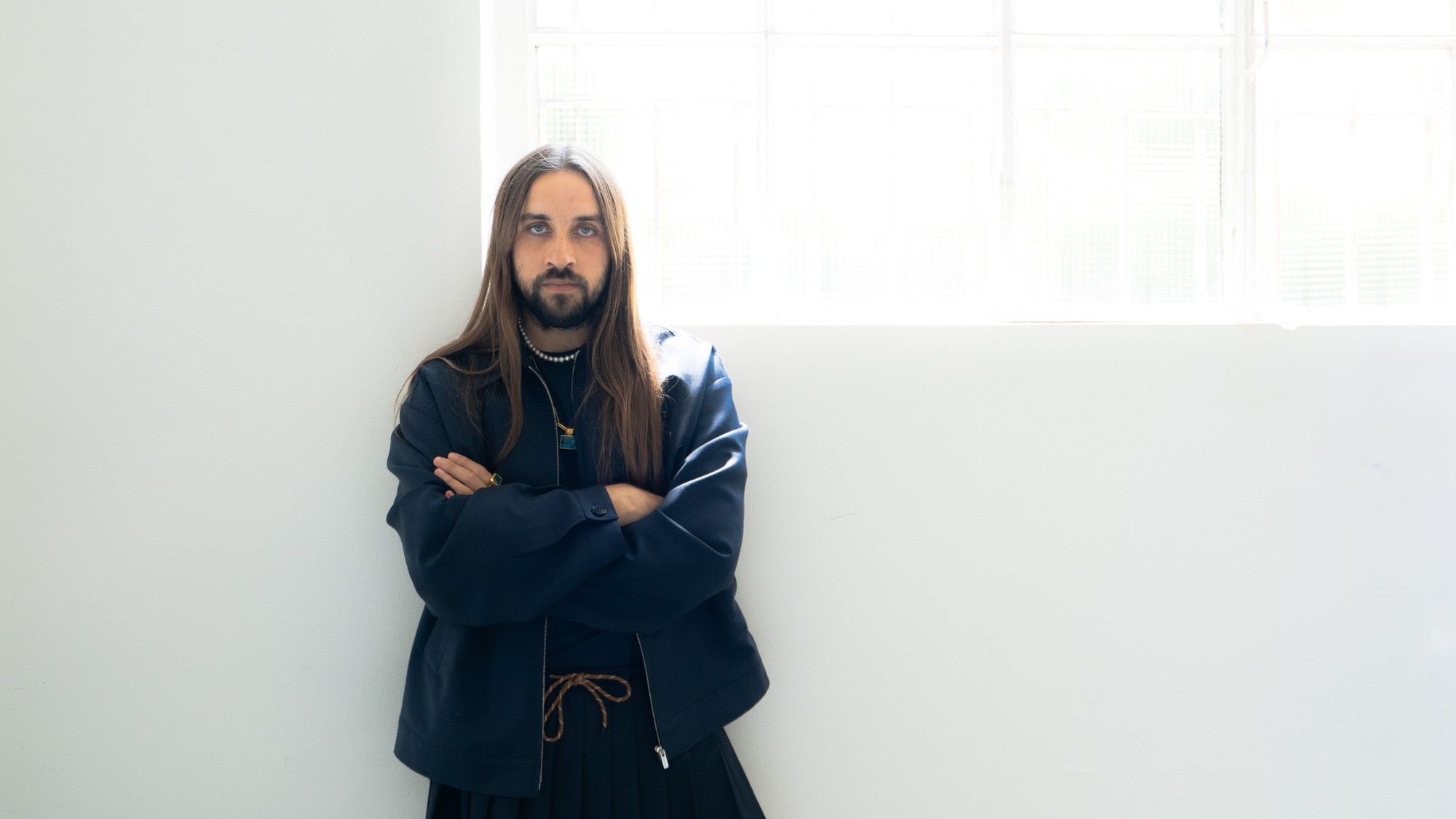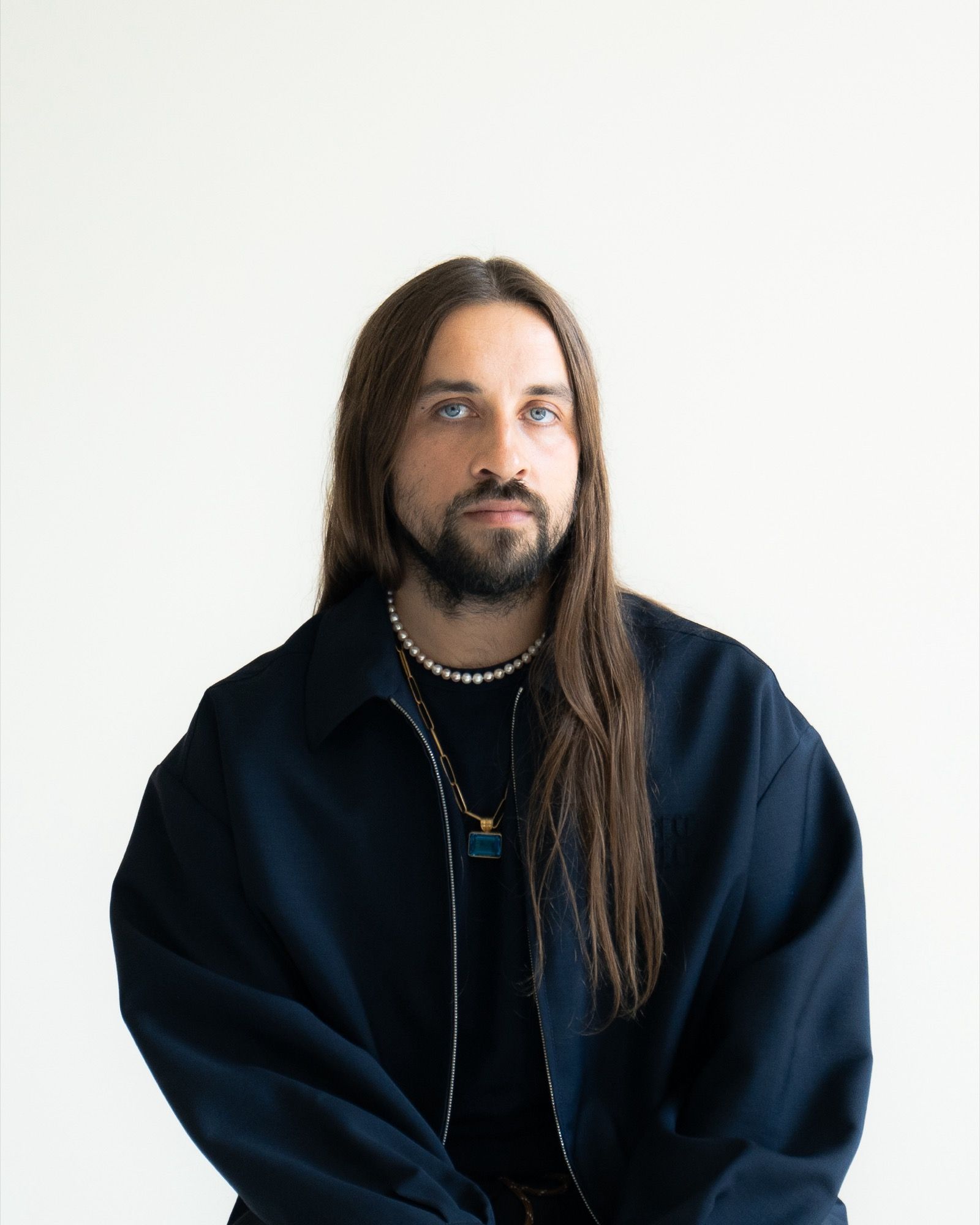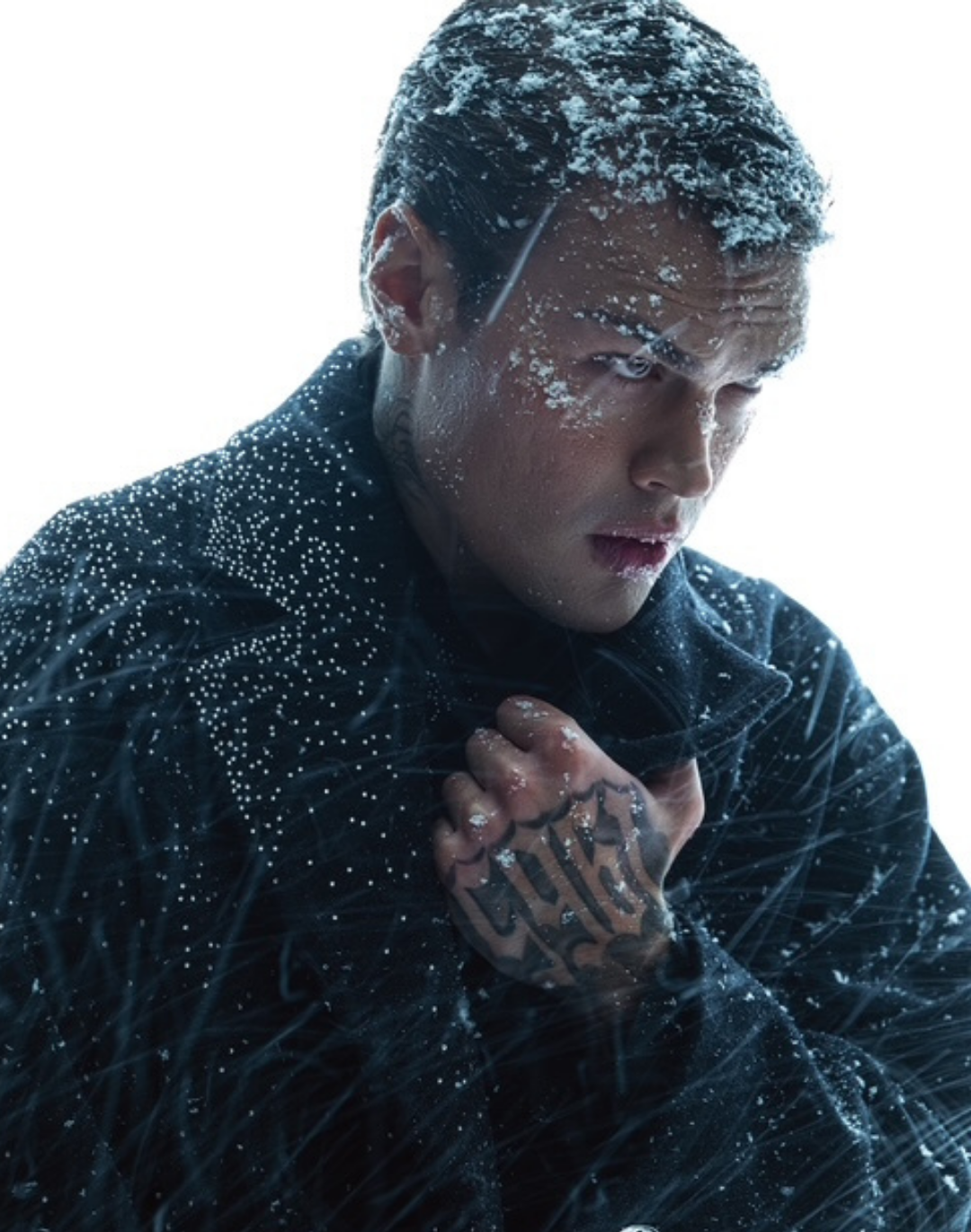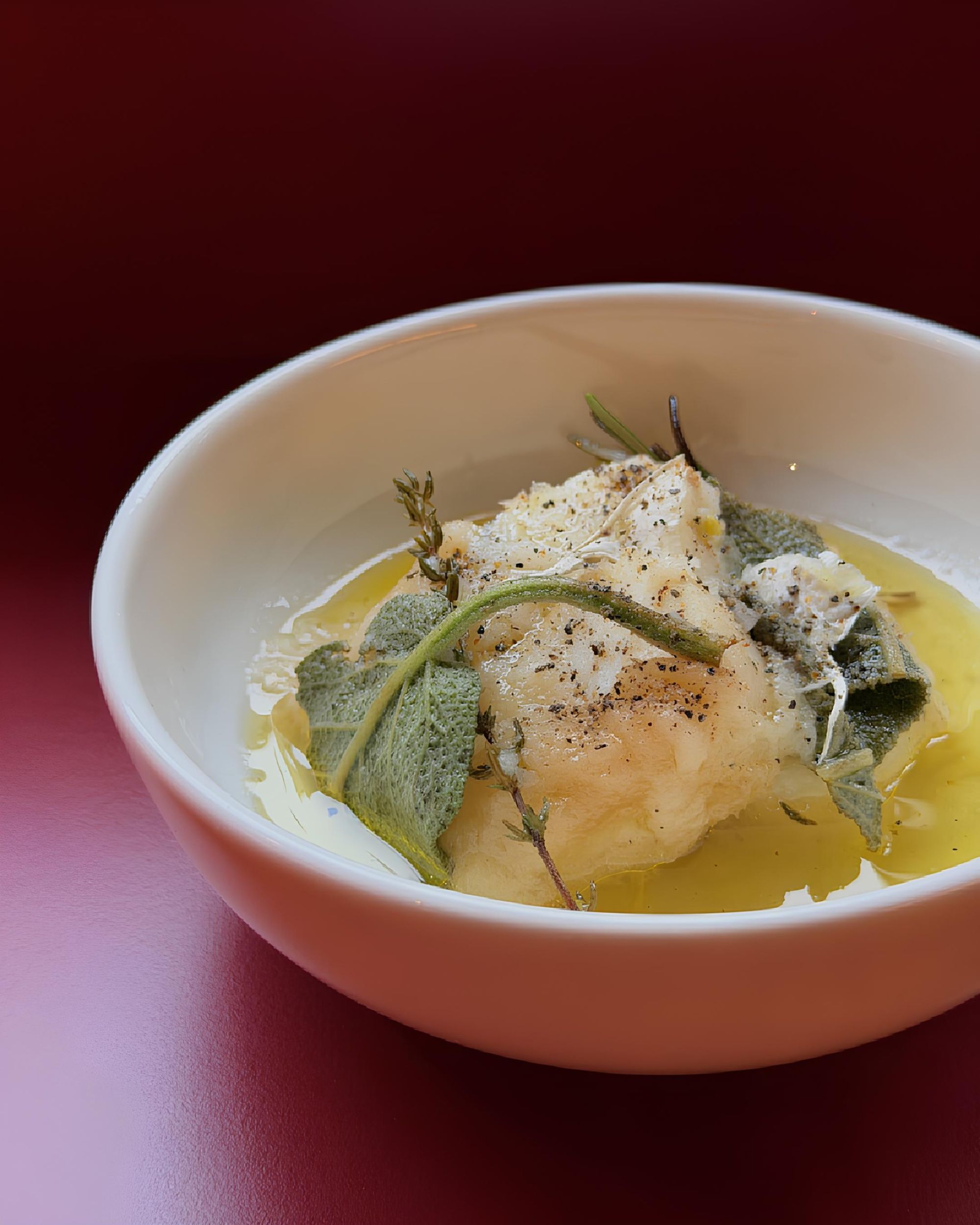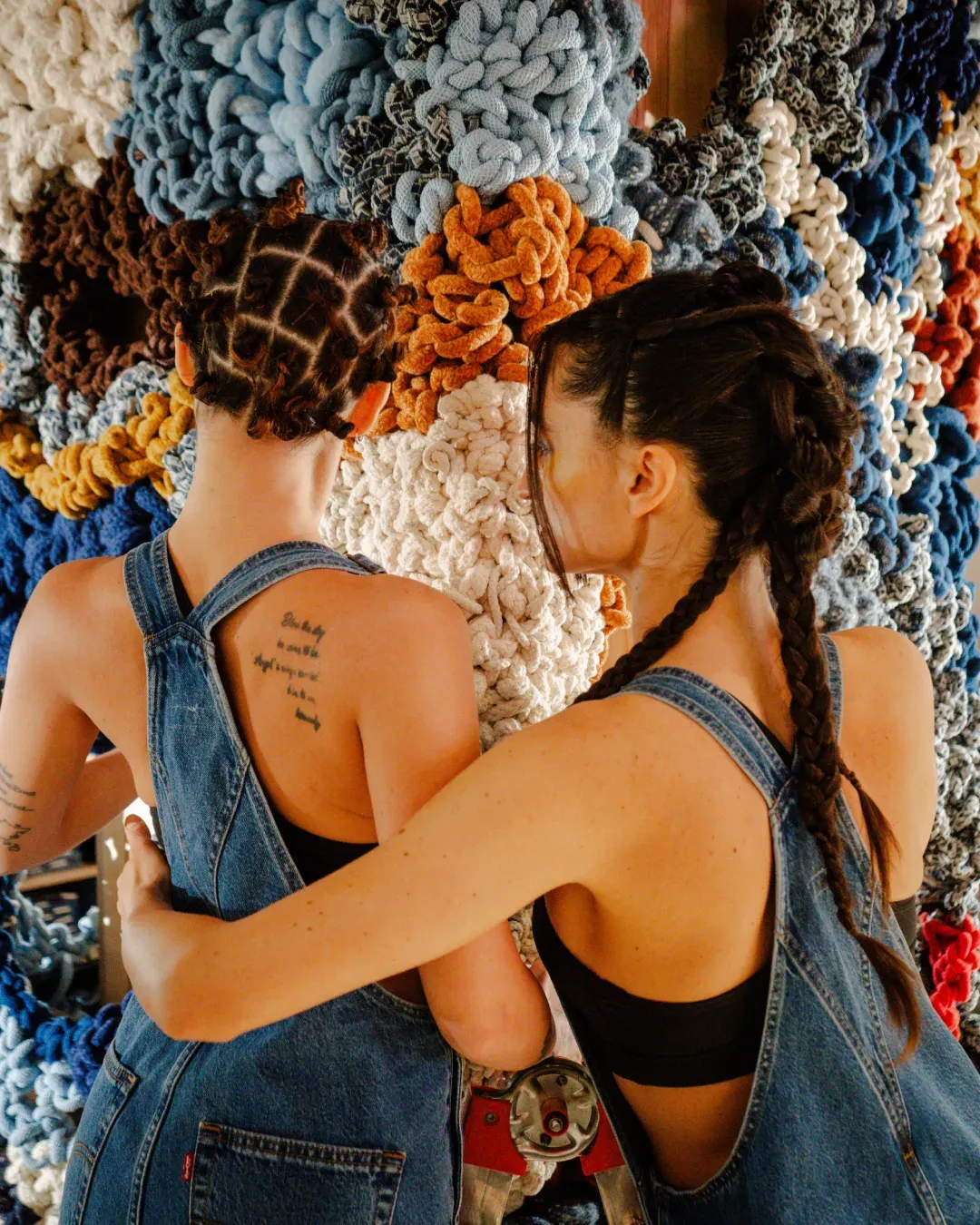
«Like a perfect storm»: interview with the designer of AREA Piotrek Panszczyk on Taylor Swift's jeans at the Super Bowl and the brand's future in Italy
« It's not officially out there yet, but we're kind of starting to tell people around», says Piotrek Panszczyk, creative director of AREA, after revealing that the brand's production will soon be moving to Italy. «Almost two years ago we saw that there was a big shift in the way we want to produce our clothes. It was a big step. For various reasons: yes, quality and production of the clothes, but also truly, really more expertise in what we do. We actually need people that have 40 years or 30 years of experience versus three». This is excellent news given that AREA is one of the strongest brands on the New York scene – and even stronger today after Taylor Swift wore their crystal-covered jeans for her Super Bowl concert, right after their last show, putting the brand in the global spotlight. «Exactly like the perfect storm», comments Kareem Burke, who handles marketing and communications, while in New York, co-founder Beckett Fogg serves as CEO. Of course, the creative duo is still exploring the city, gauging the atmosphere, and they won't abandon New York Fashion Week, possibly considering a cultural activation in Milan «to set the tone» and not intrude on the city's ecosystem – nonetheless, in one way or another, New York, at least in terms of craftsmanship, is starting to feel too limiting for both of them. «I think the problem with us in New York», explains Panszczyk, « is we really stand out there, but sometimes it's hard for us to find equal peers that have experienced the same type of clothes».
The decision to move production to Italy was also driven by a certain distrust of American fashion institutions. «New York is a bit more open and transgressive. There is a lot of beautiful things about New York, it's a very progressive place», says Panszczyk. «But I think the way that the funding and the industry is kind of set up, the system, is actually not functioning properly. There's just this kind of this feeling from the layer above that they basically are looking for funding for themselves and then they bring in designers and they sponsor them here and there, but it's not really about longevity. It's more about this funnel of money that they need to exist themselves as a system versus really actually thinking about the people under them that will build it for them. So it's like short sighted and so business-oriented». And perhaps if AREA's collections have been successful, given that the brand is one of the few that sells today, is present on the streets and not just on social media, and doesn't need to give clothes to VIPs who, as in Taylor Swift's case, buy them themselves, it is precisely because Panszczyk works with longevity in mind: the brand was born to last, and no one is chasing something that will fade in three months or a year. «For us, it's always important to really hone in on what we're really trying to do. And I think make things that are desirable, that really touch you and really make you buy something because it kind of does something to you, does something to your personality. It is transformative. And I think that is kind of in a way the base and essence of luxury for us. We give you something that is maybe not that neutral, but in a way it's about what you do with it».
If AREA has become a cult brand in relatively little time, it's thanks to a relatively simple mechanism: the merchandise is liked and sells, those who buy it come back to buy more, but above all, the clothes have their own personality. This does not mean that the clothes themselves are strange for the sake of being strange, nor part of that modernist/minimalist trend in the style of Phoebe Philo-core. «When you do something for ten years, why it becomes so good?», asks Panszczyk. «Because you really took the time to perfect it. And I think that's kind of like how we also see our ethos and by being so kind of directional in what we do. Yeah, maybe sometimes it's less trendy, you know, maybe there's ebb and flows of kind of like the broader trends in the world that we fall in or not». A result that has attracted around the brand «a very loyal customer base» summed up in the figure of a woman who «is longing to get something to stand out, you know, versus blend in». This, however, does not preclude anything for the two: «Maybe that changes over time, maybe our brand kind of grows in different territories. But I think in its ethos and essence, it's always the same». In this whole context, the community that revolves around the brand (the name AREA refers precisely to an open space where people can meet, pass by or return) is essential: «First you have our direct community of people that we work with, artists that create image with us. But then on top of that you also find people around that community in nightlife, in art that you really start relating to, you know, that people that you really look up to. And I think New York is a great city for that. If we have one thing, iconic people, you know what I mean? You don't have these people anywhere else».
But when talking about AREA, one must necessarily discuss the brand's business model. A business model that we could define as innovative but for which the correct definition would be "intuitive": the two founders have systematically circumvented the various illogicalities and time-wasting often imposed by fashion's presentation and distribution systems. «After COVID, we had a lot of opportunities to really rethink our business and see how it can kind of transform in the future. We decided to change our schedule into a “see-now-by-now” schedule». We know that several brands experimented with this format during COVID, including Jacquemus, but the measure achieved the desired results only with independent brands like AREA. «Once we develop the product and the idea of what the product is, once we sold that, we still have a few months to really build a narrative about what the show can be, based on what the product is. But also when you have to rush all these things, all these formulas together into one thing, it's so hard to have something conceptually very sound, amazing product, perfect timing. It's just almost too much. So working like this, we can really build momentum». In short, by deciding to leave behind the mechanism of sales campaigns, ordering, production, stocking, and distribution, the two managed to calculate everything in advance, minimizing unsold inventory, translating the views and social interactions of the show into direct sales, and also creating a sense of synchronicity that has the psychological effect of making customers feel part of the drop. « This idea of a fashion show. Do we need it or don’t?», Panszczyk wonders. « It’s something very primal or something that people really relate to. And it can really do something for our business. You know, a fashion show really becomes a moment that skyrockets the informations and the visual through on the entire globe».
In Panszczyk's words, the effect produced by this synchronization of the brand's activities is explosive: «What we really see is that once we release the show, it really resonates with people, because the theme really becomes the storyline for everything, the invite, the people that come, the concept - it's really about that build up visually, but then for the client, it's just amazing that they can buy it right now, have it, just like all these celebrities can also have it». But how exactly does such a mechanism work? Surely there are several steps and complications, but Panszczyk explains it in very general terms: «We basically sell it on a wholesale schedule. So, but we just put it under embargo. So no one is really supposed supposed to bring it out or show it, it just needs to be produced. Then when it kind of hits the store, when the show happens, people can immediately shop into it. It works really well». It's clear that this mechanism cannot work solely on a commercial basis, meaning there cannot be a micro-release of commercial pieces immediately preceding the collection. If the format is to be adopted, it must be adopted in its entirety: «you need to really put in effort that it's kind of all of the product, you know, versus like a printed T shirt with just one thing. I think it's still important that the client can actually feel like she's buying into the whole collection». Added to this model is the idea of collecting feedback from customers and users to better calibrate the production of what arrives in store: «The most important thing is our consumers and our viewers that maybe become consumers. It's always important to really take in all their feedback, listen to them, and I think that's why also our e-commerce is really growing quite a lot in a very unstable wholesale market because we do listen and look at what they do, who they are, how they evolve».
For AREA, business is something pragmatic or «scientific», to use Panszczyk's words. «It's possible to clean the data, break it down and analyze it and analyze it in terms of what you really need. And I think what we see more and more as a young brand, is that what everything is about is finding what you're really good at and push that». Certainly, both from a creative and economic standpoint, but also in terms of continuity, producing too much to chase the trend cycle «is a temptation» to which the brand's founders have not yielded in their aim to work on a project that would not lose momentum after just a few seasons or a few years. «Our collection live as product in the world. So you need to build also something that feels like it's a good idea. But can it be a good idea for four years instead of a season? Learning how to do that as well is really important because then it's there for a longer time, there's less change. It doesn't have to go on sale. For us, it's really important to kind of change on the production side, like doing a bit less than the usual. And because it's because it's more manageable we're not overproducing our inventory. We try to super focus really look at sell throughs and kind of make smart decisions». But one must not think that this pragmatic approach is also a simplistic approach: underlying this flexibility, this desire to develop a new business model for new times, there is both a continuous pursuit of excellence and the even harder wisdom of refraining from pressing too hard on the accelerator. « I think for us, it’s more about putting our best foot forward, wanting to do the best, wanting to be the best or really even crafting something to our best. Yes, we want to grow but we need to do it responsibly. You have to grow without growing too much».










































